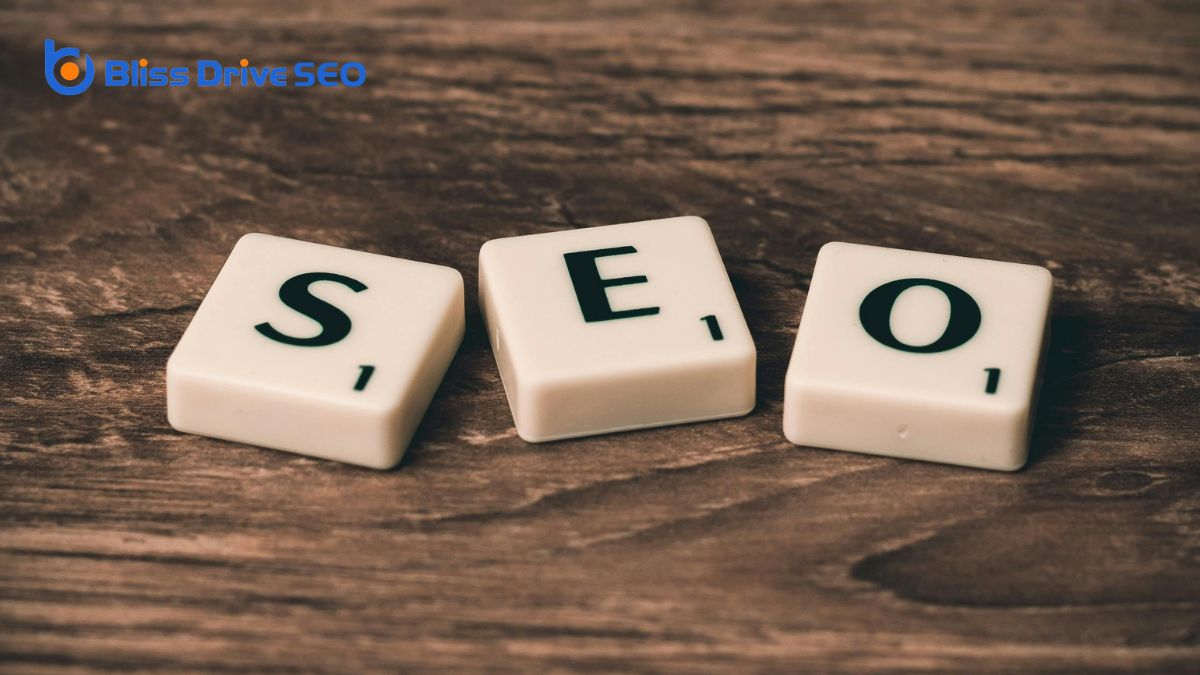Learn More About Us

To optimize your ecommerce product pages for SEO, start by aligning product names with relevant keywordsWords or phrases that users type into search engines to find information. and optimizing your titles and meta descriptions. Implement structured data to enhance rich snippetsEnhanced search results featuring extra information like ratings or images. and visibility. Use high-quality images with optimized alt textDescriptions added to images to help search engines understand the content of images. and compelling video content. Improve your page load times for a better user experience and SEO performance. Make sure you use breadcrumb navigationA navigational aid showing the user’s path to the current page. to improve site structure and reduce user frustration. Incorporate customer reviews and testimonials to build trust and drive traffic. When you apply these strategies, your product pages will perform better in search results and attract more visitors. For those curious, there's more to explore!
Aligning product names with keywords is an important step in boosting your ecommerce site's search engine visibility and attracting relevant traffic. When you integrate target keywords into your product names, search engines can more easily understand the content of your pages. This alignment not only enhances your SEO efforts but also improves your overall site ranking.
Using keyword-aligned product names means you're leveraging terms that potential customers are already searching for. This strategic move can greatly increase your click-through rates and conversions.
For example, if someone searches for a "water-resistant hiking backpack" and your product name includes those exact keywords, your chances of appearing in search results and attracting clicks are much higher.
Consistent keyword usage across your product names reinforces the relevance of your content. Search engines recognize this consistency and are more likely to rank your pages higher for those target keywords.
It's important to make sure that your product names aren't just keyword-heavy but also relevant and descriptive. This way, you're not only improving your SEO but also providing a better user experience, which can leadA potential customer referred by an affiliate who has shown interest in the product or service but h... to more conversions and satisfied customers.

Optimizing titles and meta descriptions is a crucial step in enhancing your ecommerce product pages' search engine visibility. To start, incorporate targeted keywords into your product titles and meta descriptions. This not only improves search engine visibility but also aligns with keyword researchThe process of finding and analyzing search terms that people enter into search engines. for better SEO performance.
Your title tagAn HTML element that specifies the title of a web page, displayed on the SERP and browser tab. should include the brand, product name, and key features. For example, "Brand X High-Performance Running Shoes – Lightweight & Breathable." This structure guarantees that search engines comprehend what you're offering and helps attract potential customers. Craft compelling and descriptive meta titles to entice users to click through to your product page. Don't forget that a well-optimized title tag can make a significant impact.
Meta descriptions should accurately summarize the product and its benefits. Incorporate relevant product information to provide users with a preview of what to anticipate. For instance, "Discover the comfort and durability of Brand X running shoes, designed for top performance and style."
While focusing on titles and meta descriptions, remember to integrate structured data and Schema markupCode added to a website to help search engines understand the content. into your HTML code to further enhance product page SEO. Using internal links and descriptive alt text also contributes to a well-rounded optimization strategy.
Implementing structured data on your product pages can greatly enhance your search visibility and improve click-through rates. By using proper markup, search engines better understand your content, increasing your chances of appearing in rich snippets.
This not only enhances your site's presence but also provides detailed product information directly in search results.
Leveraging structured data on your ecommerce product pages is a powerful way to boost search visibility. By implementing Product Schema, you can create rich snippets that provide search engines with detailed information about your products. This aligns with SEO best practices, making it easier for search engines to understand and index your content, ultimately enhancing visibility.
Structured data can notably increase organic trafficVisitors who come to a website through unpaid search engine results.. Websites utilizing this strategy often see a 40% surge in organic traffic, thanks to enhanced search engine understanding and better ranking positions. Rich snippets, generated through structured data, can boost organic search traffic by up to 30%. This means more potential customers will see your product listings.
Implementing Product Schema also increases the likelihood of your products appearing in rich results by 20%. These rich results stand out in search listings, often leading to higher click-through rates.
In fact, structured data can lead to a 30% increase in click-through rates, further propelling traffic to your ecommerce product pages.
Building on the foundation of enhanced search visibility, improving click-through rates is the next step in maximizing the benefits of structured data. By implementing structured data, you can provide rich snippets in search results that make your listings more appealing to users. These snippets can include additional product information like prices, availability, and reviews, which directly align with user intent matching.
When search engines understand your product information better through structured data, your product pages gain enhanced visibility. Properly adding product schema can greatly boost your website ranking in search results, driving more impressions and, ultimately, more clicks.
The detailed and relevant snippets that appear in search results make your page stand out, enticing users to click through to your site.
Structured data is essential for making your product pages more relevant to users' searches. By matching user intent more effectively, you improve the chances of your listings appearing when users are most likely to engage. This not only increases visibility but also enhances your click-through rates, resulting in more traffic to your ecommerce site.
Implementing structured data is a powerful strategy to elevate your ecommerce product pages and ensure they attract the attention they deserve.

Elevating your ecommerce product pages to the next level involves enhancing rich snippets by implementing structured data. By integrating structured data markup, you can guarantee that search engines better understand the content on your product pages. This understanding leads to improved visibility and click-through rates, ultimately boosting your SEO performance.
When you use structured data markup on your ecommerce product page, you make it possible to display essential product details like price, availability and reviews directly in search results. These rich results not only catch the eye of potential customers but also provide them with crucial information upfront, improving the overall user experience.
Implementing structured data is one of the top SEO best practices for ecommerce. It helps drive more traffic to your site by making your product pages more appealing in search results. This increase in organic traffic often translates to more qualified leads and higher conversionThe completion of a desired action by a referred user, such as making a purchase or filling out a fo... rates.
Incorporating structured data into your SEO strategy doesn't just enhance the SEO of your product pages; it also provides a significant competitive edge. By presenting detailed product data directly in search results, you make it easier for users to find exactly what they're looking for, encouraging them to click on your listings over others.
Enhancing your product descriptionsDetailed information about a product, including features, benefits, and specifications. with unique and detailed content not only sets you apart from competitors but can also greatly boost your SEO rankings.
Highlight key features like dimensions, materials, and uses, and use bullet points to make the information easily digestible.
Incorporate relevant keywords naturally to improve search engine visibility and drive more traffic to your e-commerce store.
A key element in boosting your eCommerce product pages is incorporating unique and descriptive content into your product descriptions. By weaving unique content into your product pages, you can greatly enhance your SEO game. Search engines prioritize pages with detailed and original content, which leads to higher rankings and greater visibility.
Descriptive content isn't just about listing features; it's about painting a vivid picture that appeals to your audience. Specific product details and benefits in your product descriptions can boost conversions by up to 30%.
When you create engaging product descriptions, you make it 40% more likely that customers will make a purchase. This personalized approach not only attracts visitors but keeps them on your pages longer, reducing bounce rates by 20%.
Implementing these SEO best practices can increase your organic traffic by 7.8x compared to using generic content. It's vital to invest time in crafting compelling, informative descriptions that resonate with your target audience. By doing so, you enhance the user experience, making your product pages more attractive to both customers and search engines, ultimately driving higher conversions and sales.
When it comes to optimizing your eCommerce product pages, emphasizing key features is crucial for enhancing product descriptions. By including detailed information like dimensions, materials, and unique selling points, you can provide potential customers with the thorough details they need. This not only helps them make informed purchasing decisions but also greatly boosts your conversion rates.
To optimize your product descriptions further, focus on incorporating long-tail keywordsLonger, more specific keyword phrases that are less competitive and often more targeted.. By targeting specific features and benefits, you can enhance your organic search visibility, making it easier for potential customers to find your products online. Remember, 87% of online shoppers consider product descriptions extremely important when deciding to buy, so the quality of your content can't be overstressed.
Using bullet points in your product descriptions can make the information more readable and allow users to quickly scan for essential details. Highlighting key features in this manner ensures that your audience can easily grasp the most compelling aspects of your product. Ultimately, detailed and engaging product descriptions that highlight key features won't only attract more visitors but also convert them into satisfied customers more efficiently.

Leveraging optimized images and well-crafted alt text can greatly boost your ecommerce product pages' SEO performance. High-quality images are essential for attracting users and improving conversion rates. To make the most of your visuals, make sure they're optimized not just for aesthetics but also for search engines.
Improving page load times is important for enhancing user experience and boosting conversion rates. You've got just a few seconds to capture a visitor's attention before they decide to leave, especially on mobile devices. Did you know that 53% of mobile site visitors abandon pages that take longer than three seconds to load? That's why optimizing images is pivotal. Compress your images and use the correct file formats to speed up your site.
Google's Core Web Vitals emphasize page speedThe time it takes for a webpage to load, affecting user experience and conversion rates. as a key SEO performance factor. Incorporating these metrics won't only improve user experience but also give you an SEO boost.
Another effective strategy is using a content distributionThe process of sharing and promoting content across various channels. network (CDN). By distributing your content closer to your users, a CDN reduces latency, leading to quicker page load times.
Don't overlook your web hosting provider. Upgrading to a faster web hosting provider can greatly enhance site performance. A reliable host ensures your site runs smoothly and loads quickly, further decreasing latency.
A well-implemented breadcrumb navigation system offers a seamless way for users to understand their location within your website's hierarchy. When users can easily see where they are and how they got there, it enhances their user experience and makes your site more intuitive. Breadcrumb navigation is particularly beneficial for e-commerce product pages, where users might navigate through multiple categories and subcategories.
Here are four key benefits of using breadcrumb navigation:
Why do customer reviews and testimonials matter so much for your e-commerce product pages? They greatly enhance conversion rates, increasing them by up to 270%. When potential buyers see positive customer reviews and testimonials, they're more likely to trust your products. In fact, 92% of consumers read reviews before deciding on a purchase, and 88% trust these online endorsements as much as personal recommendations.
Customer reviews also improve your SEO. They provide fresh content regularly, making your product pages more appealing to search engines. Products with reviews get 4x more clicks, driving more traffic to your site. To maximize this, use structured data to mark up reviews and improve your visibility in search results.
Incorporating testimonials on your product pages not only builds trust but also aids in decision-making for potential buyers. These endorsements serve as social proofThe influence that other people’s actions have on one's own behavior, often seen in likes, shares,..., showing that others have had positive experiences with your products. By leveraging structured data, you enhance the discoverability of these reviews by search engines, boosting your page rankings and visibility.
You should start by researching relevant keywords, then optimize titles, meta descriptions, and URLs. Use product schema for rich snippets, add customer reviews for trust, and guarantee fast loading times and mobile-friendly design to enhance SEO performance.
For a new ecommerce website, focus on thorough keyword research and on-page optimizationImproving individual webpages to rank higher and earn more relevant traffic in search engines.. Guarantee mobile-friendliness, add structured data markup, and regularly monitor SEO metrics. These steps will boost visibility and attract traffic to your product pages.
You'll find SEMrush, Ahrefs, Moz, and Google AnalyticsA web analytics service offered by Google that tracks and reports website traffic. invaluable for Ecommerce SEO. They track keyword rankings, analyze backlinksLinks from other websites pointing to your website, crucial for SEO., audit websites, and measure performance, making them essential tools for optimizing and understanding your ecommerce site's SEO.
You should use hierarchical categories and breadcrumb navigation. Optimize titles with keywords, write clear descriptions, and add internal links. Regularly monitor performance metricsKey indicators used to measure the effectiveness of affiliate marketing efforts, such as clicks, con... to make data-driven improvements and boost your ecommerce category pages' SEO.
To boost your eCommerce product pages, align product names with keywords, optimize titles and meta descriptions, and implement structured data. Enhance your product descriptions, optimize images with alt text, and guarantee speedy page load times. Utilize breadcrumb navigation and include customer reviews and testimonials. By following these strategies, you'll improve your SEO, attract more visitors, and ultimately increase sales. Start implementing these tips today for a more successful online store!
